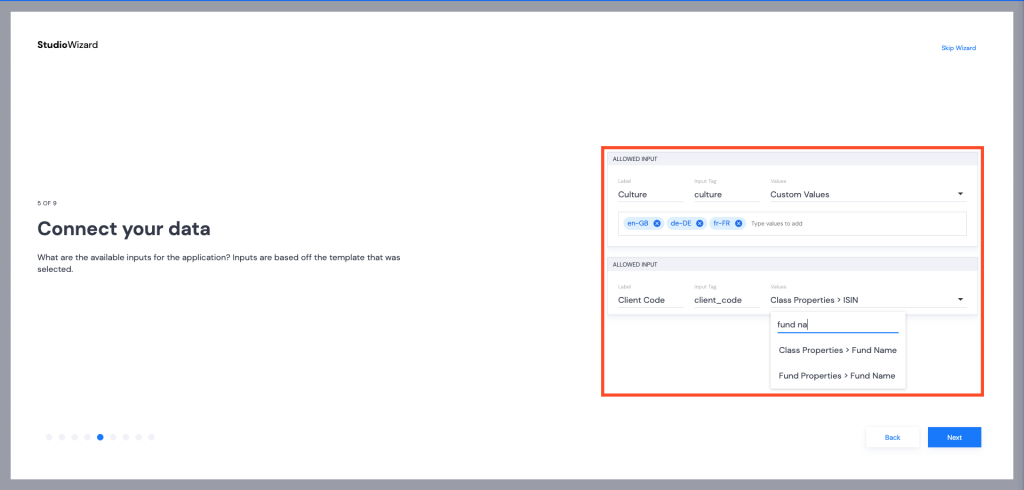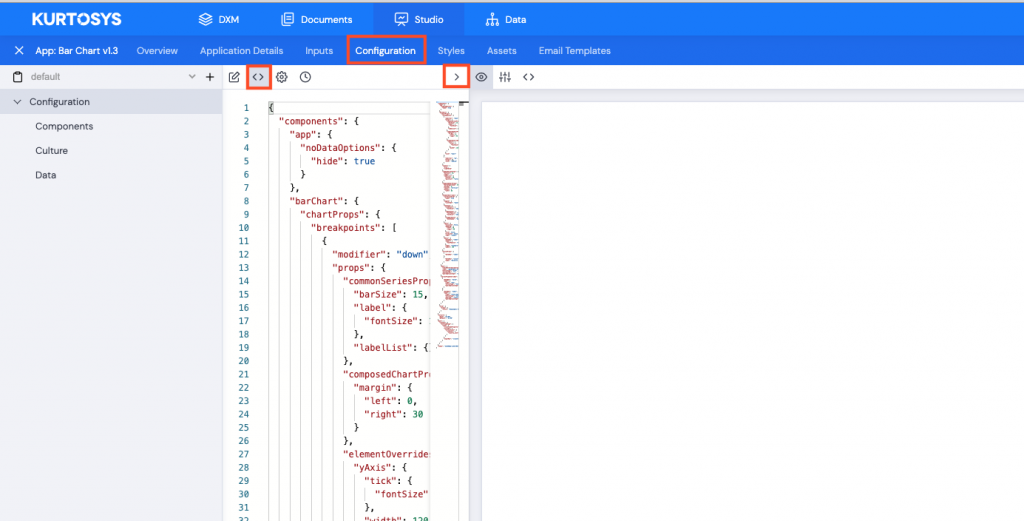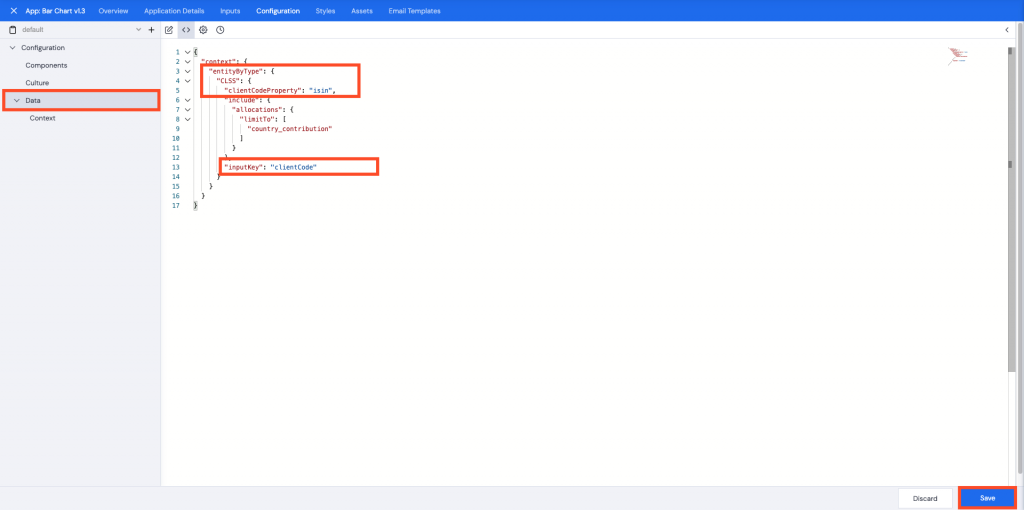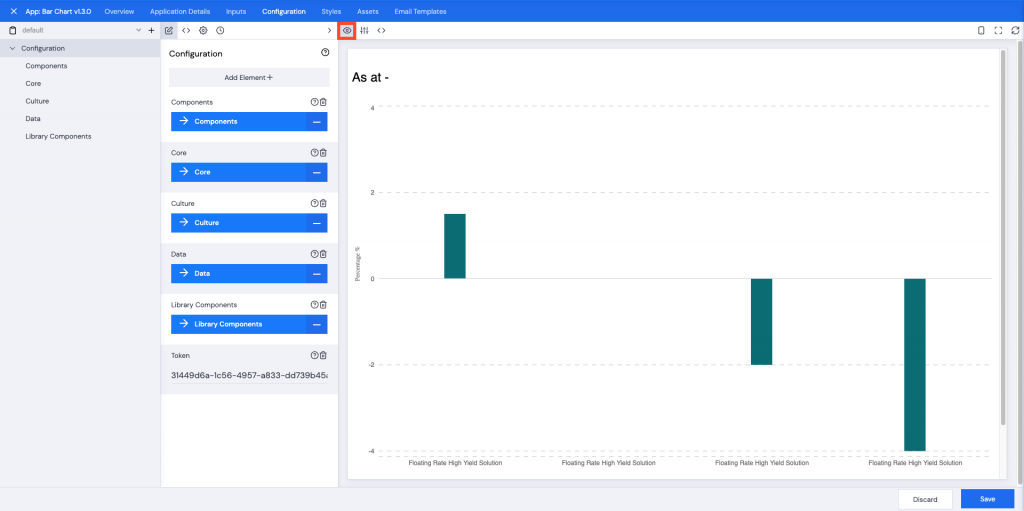I think I’ve set up my app correctly, but I can’t see it in the Preview pane.
This could be for a variety of reasons, try the following troubleshooting options:
Table of Contents
No Preview
Some apps, because of how or where they are used do not have preview options available. These apps include:
- User Context
- Application Manager
- Document Render
Configuration
Data driven Apps require inputs to be configured.
When setting up an App through the wizard, the Connect your data screen provides you with the option to define data inputs:

- Culture: each culture must be manually typed in (only those added in the Data Dictionary can be used)
- Client Code: use the dropdown option to choose the unique Entity Property that serves as the identifier for your entities e.g. Class Properties > ISIN or Fund Properties > Fund Name
Client Code
- To make sure the inputs pull through correctly into the Preview window, click the Configuration tab and expand the <> JSON view by clicking the > right arrow.

- Click the Data tab on the right to access the Data section.

- Search for the JSON script that references the entity type used in the app:
- Share class – CLSS
- Fund – FUND
- Account – ACCT
- Benchmark – BMRK
- Ensure that clientCodeProperty references the property code for the entity you need to reference (as above).
- The inputKey must be set to clientCode.
- Delete any additional references to entityByType > clientCodeProperty referring to other entity types if any exist.
- Click Save.
- Add a comment, then click Confirm.
Include
Ensure that the “include” section under Data in your configuration refers to the correct property type, e.g. in the screenshot below, the app will look for statistics type data.
Preview Inputs
- To set Preview Inputs, select the Inputs icon in the right pane.
- Choose the Culture and Client Code combination to be displayed.
- Click Save.
- Add a Comment, then click Confirm.

Allowed Inputs
If you’ve skipped the Wizard, or want to confirm you have selected Allowed Inputs, click the Inputs tab in your app.
Ensure that the Allowed Inputs for this particular app have input data added.
ISIN is using Class Properties > ISIN which means that any ISIN value may be selected using the dropdown arrow in the Inputs option attached to the Preview screen.
Note: The ISIN that you select must have the data to match the requirements for the selected app.
CULTURE is using Custom Values which means that specific cultures must be manually entered, e.g. as below en-GB, de-DE, etc.

If data is missing for any of your inputs, a preview will not be possible.
Fill in the missing data.
Parent Client Configuration
If your app is using a Parent Client Configuration, ensure that the Core, Culture and Data are set up to include what your app needs.
Token
Ensure that your app has a token in place and that the token used connects to a database with data to match what is required for the app.
If your app uses a Parent Client Configuration, make sure that the token used for the Parent Client Configuration connects to a database with data that is suitable for your app.
If the token is blank, in either the app config or the parent client config, contact your client instance administrator who will contact Support.
Styling
Some client instances have themes attached, these themes dictate styles for any apps created in the client instance. As an example, they specify line color, font style, font weight and this is applied based on the app configuration. This is set in the embed html.
However, some apps use their own set of styles, and where no theme is set, apps which depend, for example, on spacing or alignment for data to display, will not display at all without having styling applied.
